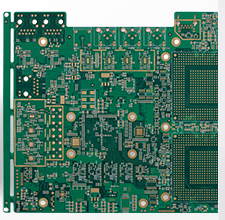1. General concept of electromagnetic compatibility
The fundamental reason to consider emc is the existence of electromagnetic interference. Electromagnetic Interference (EMI) is the process by which destructive electromagnetic energy is transmitted from one electronic device to another by radiation or conduction. In general, EMI refers specifically to radio frequency signals (RF), but electromagnetic interference can occur over all frequency ranges.
Electromagnetic Compatibility (EMC) refers to the ability of electrical and electronic systems, equipment and devices to operate at their designed level or performance within specified safety limits in a set Electromagnetic environment without damage or unacceptable deterioration of performance due to Electromagnetic interference. The electromagnetic environment here refers to the sum total of all electromagnetic phenomena that exist in a given place. This shows that electromagnetic compatibility on the one hand means that electronic products should have the ability to suppress external electromagnetic interference; On the other hand, the electromagnetic interference generated by the electronic product shall be less than the limit and shall not affect the normal operation of other electronic equipment in the same electromagnetic environment.

Today's electronic products have shifted from analog to digital design. With the development of digital logic equipment, problems related to EMI and EMC have become the focus of products, and designers and users pay great attention to them. The United States Communications Commission (FCC) published radiation standards for personal computers and similar devices in the mid to late 1970s, and the European Community in its 89/336/EEC electromagnetic compatibility Directive proposed mandatory requirements for radiation and interference interference. China has also developed national standards and national military standards related to electromagnetic compatibility, such as "Electromagnetic Compatibility Terms" (GB/T4365-1995), "Electromagnetic Interference and Electromagnetic Compatibility Terms" (GJB72-85), "Radio interference and immunity measurement equipment specifications" (GB/ T6313-1995), "Measurement methods and permissible values for radio interference characteristics of electric tools, household appliances and similar appliances" (GB4343-84). These emc specifications have greatly advanced electronic design techniques and improved the reliability and applicability of electronic products.
2. Importance of EMC in PCB design
As the sensitivity of electronic equipment is getting higher and higher, and the ability to accept weak signals is getting stronger and stronger, the frequency band of electronic products is getting wider and smaller, and the anti-interference ability of electronic equipment is becoming stronger and stronger. The electromagnetic wave generated by some electrical and electronic equipment at work is easy to form electromagnetic interference to other electrical and electronic equipment around, causing faults or affecting signal transmission. In addition, excessive electromagnetic interference will form electromagnetic pollution, harm people's health, damage the ecological environment.
The electrical equipment in a system is said to be compatible if the various electrical equipment in the system can work without electromagnetic interference with each other causing performance changes and equipment damage. But as devices become more versatile, more complex, more powerful, more frequent, and more sensitive, this compatibility becomes harder to achieve. In order to achieve the electromagnetic compatibility of the system, it is necessary to take the electromagnetic environment of the system as the basis, requiring that each electrical equipment does not produce electromagnetic emission beyond a certain limit, and at the same time, it must have a certain anti-interference ability. Only by making these two constraints and improvements to each device can the system be fully compatible.
It is generally considered that there are two ways of electromagnetic interference transmission: one is conduction mode; The other is radiation. In practical engineering, interference between two devices usually involves coupling of many paths. Electromagnetic interference becomes difficult to control because of the existence of multiple coupling paths at the same time, repeatedly cross and produce interference together.